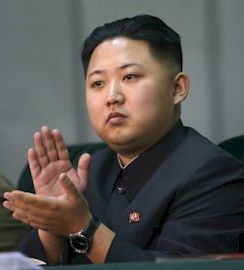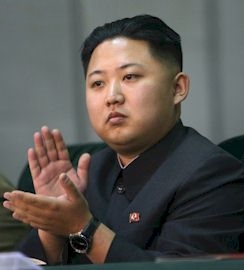
petersnoopy
"We do not have any plans to suspend any other exercises at this time," a spokesman for the South Korean government confirmed yesterday. "We will work closely with the Secretary of State (US Michael Pompeo), and we will do what he sees fit to activate diplomatic efforts." He confirmed the words of US Defense Secretary James Mattis that Washington was ready to resume joint exercises of the United States and South Korea. Recall that the exercise took place before the current period of detente on the Korean Peninsula this spring. "We stopped several of the largest exercises as a step of goodwill following the summit in Singapore (between the US and North Korean leaders on June 12)," James Mattis recalled. "We do not plan to do that again."
Regular joint exercises of the United States and South Korean troops have been taking place several times a year since creation of the joint military command of the two countries in 1978. The largest regular ones are the Foal Eagle (involving all types of troops, 305,000 soldiers in 2017), Ulchi-Freedom Guardian (development of computerized troop control, 67,000 soldiers in 2017) and Max Thunder (air exercises, more than 100 aircraft in May 2018). They have always been an irritant for Pyongyang, which believes that the exercises’ main goal are amphibious operations on the territory of the DPRK and deposition of the country's leadership by point missile strikes.
In March this year, when the tension ceased and the North Korean delegation arrived to the Winter Olympics in South Korea, it was decided to reduce scale of the Foal Eagle and Key Resolve exercises. They took place without "strategic means", that is, nuclear bombers and submarines. After a meeting between Donald Trump and Kim Jong-un on June 12, it was announced that further exercises would be suspended. On June 22, the Pentagon issued an official announcement that it "indefinitely stops" the Freedom Guardian (due in August) and two small exercises of the Korean Marine Exchange Program. The US Congress called the decision premature (in fact, North Korea has not yet taken any steps to denuclearization). Nevertheless, Donald Trump said that the exercise would have to be reduced at least because of their "incredibly high cost."
Now, apparently, the US doesn’t care about the cost of the exercises. The decision to resume them was made after Donald Trump suddenly announced on August 24 that Secretary of State Mike Pompeo would not go to Pyongyang, where he planned another round of denuclearization talks. As the Washington Post later found out, on the morning of this day, the US Secretary of State received a letter from the Vice-Chairman of the ruling Korean People's Party of Korea and, in fact, the third person in the state (after Kim Jong-un and his sister) Kim Yong-chol. As CNN sources told, authorities of the DPRK complained that "the United States is still unable to meet expectations of the DPRK regarding the next step towards signing a peace treaty." If progress is not achieved in the near future, Pyongyang threatens to resume nuclear missile tests that were stopped in September 2017.
The fact that talks between the US and the DPRK are slowly coming to a standstill became clear even earlier. On August 10, CNN, citing diplomatic sources, reported that Pyongyang had consistently rejected all US proposals for denuclearization. The DPRK authorities insist on signing a full-fledged peace treaty with the United States and South Korea before taking measures to get rid of nuclear weapons. Now, there is only a truce, signed in 1953 between them. Washington insists that "complete, verifiable, irreversible denuclearization" must precede any peace treaty.
On August 22, research portal 38 North, analyzing satellite images of the territory of the DPRK, came to the conclusion that dismantling of equipment at the Western test site of Sohe had practically not been conducted since August 3. A that, Kim Jong-un allegedly promised that the test site would be closed on June 12 during the meeting. Nothing of the sort is indicated in the document signed after the meeting, but the US president claimed that he received personal assurance from the head of the DPRK that the landfill would be dismantled.
source: cnn.com, washingtonpost.com
Regular joint exercises of the United States and South Korean troops have been taking place several times a year since creation of the joint military command of the two countries in 1978. The largest regular ones are the Foal Eagle (involving all types of troops, 305,000 soldiers in 2017), Ulchi-Freedom Guardian (development of computerized troop control, 67,000 soldiers in 2017) and Max Thunder (air exercises, more than 100 aircraft in May 2018). They have always been an irritant for Pyongyang, which believes that the exercises’ main goal are amphibious operations on the territory of the DPRK and deposition of the country's leadership by point missile strikes.
In March this year, when the tension ceased and the North Korean delegation arrived to the Winter Olympics in South Korea, it was decided to reduce scale of the Foal Eagle and Key Resolve exercises. They took place without "strategic means", that is, nuclear bombers and submarines. After a meeting between Donald Trump and Kim Jong-un on June 12, it was announced that further exercises would be suspended. On June 22, the Pentagon issued an official announcement that it "indefinitely stops" the Freedom Guardian (due in August) and two small exercises of the Korean Marine Exchange Program. The US Congress called the decision premature (in fact, North Korea has not yet taken any steps to denuclearization). Nevertheless, Donald Trump said that the exercise would have to be reduced at least because of their "incredibly high cost."
Now, apparently, the US doesn’t care about the cost of the exercises. The decision to resume them was made after Donald Trump suddenly announced on August 24 that Secretary of State Mike Pompeo would not go to Pyongyang, where he planned another round of denuclearization talks. As the Washington Post later found out, on the morning of this day, the US Secretary of State received a letter from the Vice-Chairman of the ruling Korean People's Party of Korea and, in fact, the third person in the state (after Kim Jong-un and his sister) Kim Yong-chol. As CNN sources told, authorities of the DPRK complained that "the United States is still unable to meet expectations of the DPRK regarding the next step towards signing a peace treaty." If progress is not achieved in the near future, Pyongyang threatens to resume nuclear missile tests that were stopped in September 2017.
The fact that talks between the US and the DPRK are slowly coming to a standstill became clear even earlier. On August 10, CNN, citing diplomatic sources, reported that Pyongyang had consistently rejected all US proposals for denuclearization. The DPRK authorities insist on signing a full-fledged peace treaty with the United States and South Korea before taking measures to get rid of nuclear weapons. Now, there is only a truce, signed in 1953 between them. Washington insists that "complete, verifiable, irreversible denuclearization" must precede any peace treaty.
On August 22, research portal 38 North, analyzing satellite images of the territory of the DPRK, came to the conclusion that dismantling of equipment at the Western test site of Sohe had practically not been conducted since August 3. A that, Kim Jong-un allegedly promised that the test site would be closed on June 12 during the meeting. Nothing of the sort is indicated in the document signed after the meeting, but the US president claimed that he received personal assurance from the head of the DPRK that the landfill would be dismantled.
source: cnn.com, washingtonpost.com


















